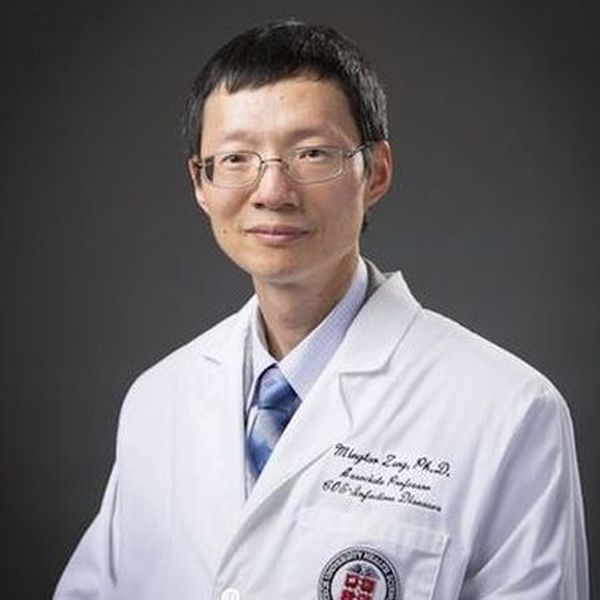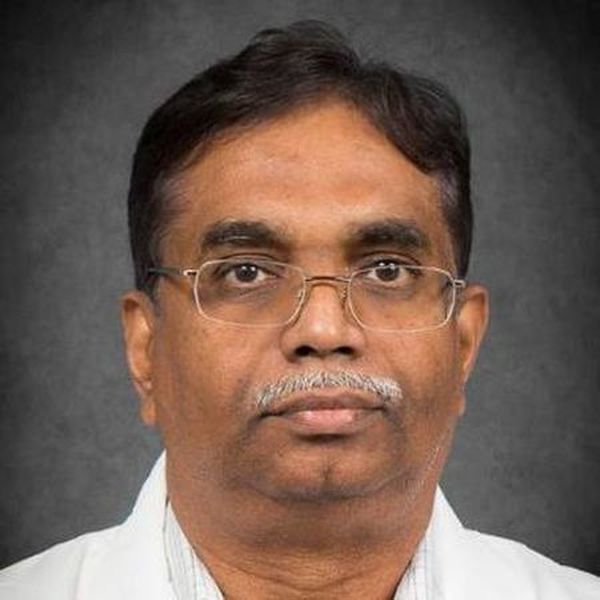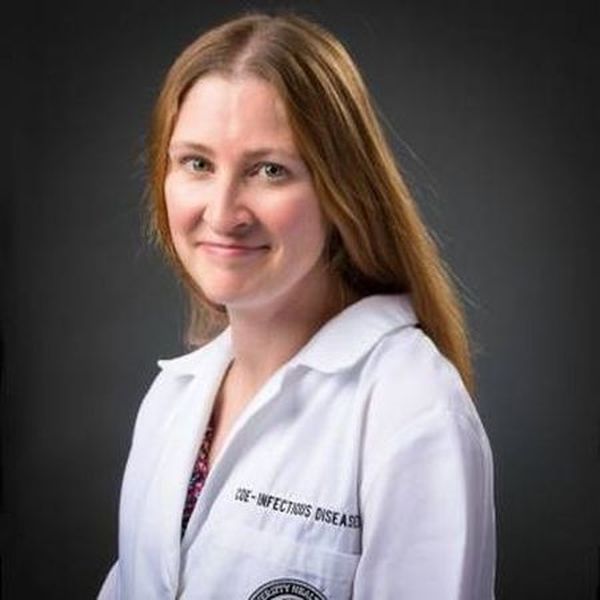Faculty

Center of Emphasis in Infectious Diseases
Professor
Research interests
My research interests are in microbial infection, immunity, development of new vaccines, and molecular therapeutics for infectious diseases. My lab focuses on developing new generation vaccines and molecular therapies against respiratory pathogens such as influenza viruses and Streptococcus pneumonia, as well as agents important for biodefense such as Bacillus anthracis (anthrax), botulinum neurotoxins (botulism), and Francisella tularensis (tularemia), and Zika virus. Most notably, we have been using the following multiple technologies to develop next generation universal/cross-strain protective influenza vaccines: 1) use self-attenuated influenza virus as a new live attenuated influenza vaccine (LAIV); 2) design chimeric influenza antigens as universal influenza vaccines delivered by detoxified bacterial toxins; 3) use heterologous prime and booster immunization regimen to broader cross-strain protective immunity; 4) create modified influenza viruses as dual-use vaccines against influenza and other infectious diseases. Additionally, we have been studying non-antibiotic dependent, host-targeted molecular therapies against anthrax and influenza, using species-specific microRNA or host-specific, cell receptor-targeted RNA interference (RNAi) approaches. We also examine the relationship of the microbiome to host immunity, as well as the connection to oral and gastro-intestinal disorders including cancers. Furthermore, we are assessing the effect of current vaccination programs on epidemiological changes in respiratory pathogens (strain replacement and antigenic variation) and how people respond to infections or vaccinations at both cellular and molecular levels.
Education and academic positions
- Sichuan University, B.S., Biology (1985)
- Wuhan Institute of Botany, Chinese Academy of Sciences, M.S., Botany (1988)
- Tel Aviv University, Ph.D., Biochemistry (1998)
- Research Assistant Professor, Department of Microbiology and Immunology, University of Rochester School of Medicine and Dentistry, Rochester, NY (2001-2004)
- Assistant Professor, Department of Microbiology and Immunology, University of Rochester School of Medicine and Dentistry, Rochester, NY (2004-2010)
- Associate Professor and Professor, Center of Emphasis in Infectious Diseases, Department of Molecular and Translational Medicine, Paul L. Foster School of Medicine, TTUHSC El Paso, El Paso, TX (2010-present)
Honors (fellowships, career development awards, endowments, etc.)
- Mary Kay Holding Corporation Research Fellowship, Dermatology Foundation, USA (2000)
- Chancellor’s Council Distinguished Commercialization Award, Texas Tech University System (2013)
- Careers in Immunology Fellowship, The American Association of Immunologists (2016)
Link to publications

Center of Emphasis in Infectious Diseases
Associate Professor
Research interests
My laboratory studies the pathogenic mechanisms of Mycobacterium tuberculosis and Mycoplasma genitalium. M. tuberculosis is the etiological agent of human 'tuberculosis', which has the ability to replicate within hostile macrophages and to lead a dormant life inside 'tubercle granulomas'. M. genitalium is a sexually transmitted pathogen, which survives and persists within host urogenital epithelial cells. We employ multiple approaches to dissect the mechanisms behind intracellular survival and persistence of both microbial species. Some important projects addressing these issues are: the role of antioxidants of M. tuberculosis and M. genitalium in the evasion of host generated oxidative radicals; role of regulatory molecules of M. tuberculosis and M. genitalium in the persistence of these species within human cells; and modulation of host microRNAs by M. tuberculosis and M. genitalium for bacterial survival and persistence. Additionally, our laboratory focuses on the development of genetically engineered vaccines against tuberculosis. This includes the improvement of existing BCG vaccines through recombinant technology, generation of new vaccine candidates by genetic manipulations, and development of recombinant booster vaccines to tuberculosis using Bacillus subtilis spores.
Education and academic positions
- Annamalai University, M.Sc., Zoology (1980)
- University of Madras, Ph.D., Zoology (1987)
- Associate Professor, Center of Emphasis in Infectious Diseases, Department of Molecular and Translational Medicine, Paul L. Foster School of Medicine, TTUHSC El Paso, El Paso, TX (2013-Present)
Honors (fellowships, career development awards, endowments, etc.)
- (2021 – 2024) DHHS – National Institute of Allergy ND Infectious Diseases A novel Quadruple Knockout Mtb vaccine against tuberculosis
- Merit Certificate by the Vice Chancellor of Annamalai University (1980)
- Science and Technology Agency Fellowship, Government of Japan (1991)
- Travel grant by Sasakawa Foundation (1993)
- Japan Health Sciences Foundation Visiting Fellowship (1999)
- Travel award by UK-TX Research Initiative (2005)
- Review Editor, Frontiers in Cellular and Infection Microbiology (2011-present)
- Editorial Board Member, Mycobacterial Diseases (2011-present)
- President-Elect for Division G (Mycoplasmology) of American Society for Microbiology (2016)
Link to publications

Center of Emphasis in Infectious Diseases
Associate Professor
Research interests
My laboratory focuses on the molecular and cellular mechanisms underlying the systemic immune responses in stroke and cerebral global ischemia; on the development of novel nanoparticle-based systems that integrate imaging and drug/gene delivery capabilities for glioma and for neuro-protection in stroke; and on new therapeutic approaches to to treat neuroAIDS by activation of macrophages/microglia . In the first project, systemic immune responses and its coupling with the central nervous system are investigated to study the mechanisms of immune modulation for stroke and cerebral global ischemia. The project involves investigation of peripheral and neuronal inflammatory signaling pathways (molecular and cellular) in brain injuries and evaluation of risk factors associated to stroke and cerebral global ischemia. We focus on the study of innate and adaptive immune responses that systemic immune signaling pathways contribute to neuronal injury and recovery. In the second project, we are developing targeted delivery of nanoparticles to treat glioma. The third project focuses on HIV-1 associated neuro-degeneration and macrophage/microglia activation to study the immunology, pathology, neurobiology, and macrophages/microglia-based targeting therapy.
Education and academic positions
- Weifang Medical University, M.D. (1982)
- Sun Yixian Medical University, Research fellow (1990)
- Bar-Ilan University, Postdoctoral Research Associate (2001)
- University of Nebraska Medical Center, Postdoctoral Research Associate (2005)
- Instructor and assistant professor of Department of Pharmacology and Experimental Neurosciences, University of Nebraska Medical Center, Omaha, NE (2005-2010)
- Instructor, assistant professor, Associate Professor, and Vice-Chair of Department of Anatomy, Weifang Medical University, China (1990-2000)
- Assistant Professor and Associate Professor, Department of Molecular and Translational Medicine, Paul L. Foster School of Medicine, TTUHSC El Paso, El Paso, TX (2010-present)
Honors (fellowships, career development awards, endowments, etc.)
- Diplomate, Internal Medicine
- Outstanding Award for Young Scientist from 1978-1998 Cohort, Shandong, China (1998)
- Advancement of Science and Technology Award (992071), Jinan, China (1999)
- Advancement of Science and Technology Award (00-2-46-6), Shandong, China (2000)
- Award “Kort 100” Postdoctoral Fellow, Bar-Ilan University Ramat Gan, Israel (2001)
- Recognition by NIH/NIDA “Cutting-edge Science in NeuroAIDS Research and Their Implications” (2009)
- Member, Recovery and Reinvestment (ARI-R2) Study section, NSF (2009)
- Member, Editorial Board ‐ Neurological Research (2009-present)
- Member, Editorial Board ‐ Translational Stroke Research (2010‐present)
- Member, Editorial Board ‐ J. Nanomedicine and Nanotechnology (2015-present)
- Member, Clinical Neuroimmunology and Brain Tumors (CNBT) Study Section, NIH (2016-present)
- NIH/UPMC-RELIEPH for Interstitial Cystitis, R01DK117383 (2018-2020)
Link to publications

Center of Emphasis in Infectious Diseases
Assistant Professor
Research Interests:
The Walker lab studies how innate immunity and physiological processes influence sepsis. Sepsis is a disease that occurs when an infection (bacterial or viral) leads to a systemic inflammatory response syndrome that is detrimental to the host. We use mouse models and cell culture to study this process.
Interferon Regulatory Factor 3 (IRF3) and sepsis: Early during an infection, pattern recognition receptors recognize conserved motifs from the microbes themselves, and from damaged host tissues. This initiates a signal transduction cascade culminating in the activation of transcription factors, including IRF3. Inflammation triggered by the innate immune response usually helps the host combat infection. However, during sepsis the immune response becomes dysregulated, with components of overwhelming inflammation and immune suppression. We have shown that IRF3 plays a detrimental role in sepsis, and determined some of the upstream pathways responsible: TIR-domain-containing adapter-inducing interferon-β (TRIF) and Stimulator of Interferon Genes (STING). We showed that IRF3 acts in stromal cells (non-immune cells) to mediate this effect. We are continuing to investigate the mechanisms whereby IRF3 influences sepsis.
Circadian Rhythms, Sleep and Sepsis: Circadian rhythms are driven by a molecular clock that coordinates sleep and other physiological processes to specific times during the 24 hour daily cycle. We found that circadian rhythms influence the innate immune response and sepsis. Mice develop more severe sepsis when infection is induced in the nighttime vs. the daytime. We showed that this effect requires an intact molecular clock within leukocytes, and is dependent on Toll-like receptor 2. We are currently investigating how sleep influences sepsis.
COVID-19: In 2019, the coronavirus SARS-CoV-2 swept around the globe, causing COVID-19: a pandemic of historic proportions. Some people infected with the virus remain symptomatic or experience mild disease. However other experience severe respiratory illness. In the worst case, these patients may end up in the ICU on a ventilator. Severe illness is more common in older people and those with underlying health conditions such as diabetes. Our lab uses mouse models to study severe COVID-19 illness, and determine the factors that influence disease outcome.
Teaching Activities:
Dr. Walker serves as course director for the Immunology and Virology courses offered by the Graduate School of Biomedical Science, and gives lectures for several other GSBS team-taught courses, including Cell and Molecular Biology and Microbiology.
Education:
Dr. Walker completed her B.S. and Ph.D. at the University of Edinburgh, Scotland. She completed postdoctoral training at Imperial College London and Yale University. Subsequently, she worked as an associate research scientist at Yale University. She joined the Center of Emphasis in Infectious Diseases at TTUHSC El Paso as an assistant professor in January 2014.
Recent Publications:
- Heipertz EL, Harper J, Goswami DG, Lopez CA, Nellikappallil J, Zamora R, Vodovotz Y and Walker WE. IRF3 Signaling within the Mouse Stroma Influences Sepsis Pathogenesis. The Journal of Immunology, 2021, 206: 398-409.
- Goswami DG, Garcia LF, Dodoo C, Dwivedi AK, Zhou Y, Pappas D, Walker WE. Evaluating the Timeliness and Specificity of CD69, CD64 and CD25 as Biomarkers of Sepsis in mice. 2021. 55: 507-518.
- Heipertz EL and Walker WE. Creation of BLT humanized mice for sepsis studies. Methods in Molecular Biology (Springer): Sepsis. 2021, 2321:137-154
- Goswami, DG and Walker WE. Detection of Blood Cell Surface Biomarkers in Septic Mice. Methods in Molecular Biology (Springer): Sepsis. 2021, 2321: 191-205
- Haspel JA, …, Walker WE, Solt LA. Perfect timing: circadian rhythms, sleep, and immunity - an NIH workshop summary. JCI Insight. 2020, 5:e131487.
- Heipertz E, Harper J, Lopez Z, Fikrig E, Hughes ME, Walker WE. Circadian rhythms influence the severity of sepsis in mice, via a TLR2-dependent, leukocyte-intrinsic mechanism. The Journal of Immunology. 2018, 201:193-201.
- Walker WE. Methods to study the innate immune response to sepsis. Methods in Molecular Biology (Springer): Traumatic and Ischemic Injury. 2018, 1717:189-206.
- Heipertz E, Harper J, Walker WE. STING and TRIF Contribute to Mouse Sepsis, Depending on Severity of the Disease Model. 2017, 47:621-631.
